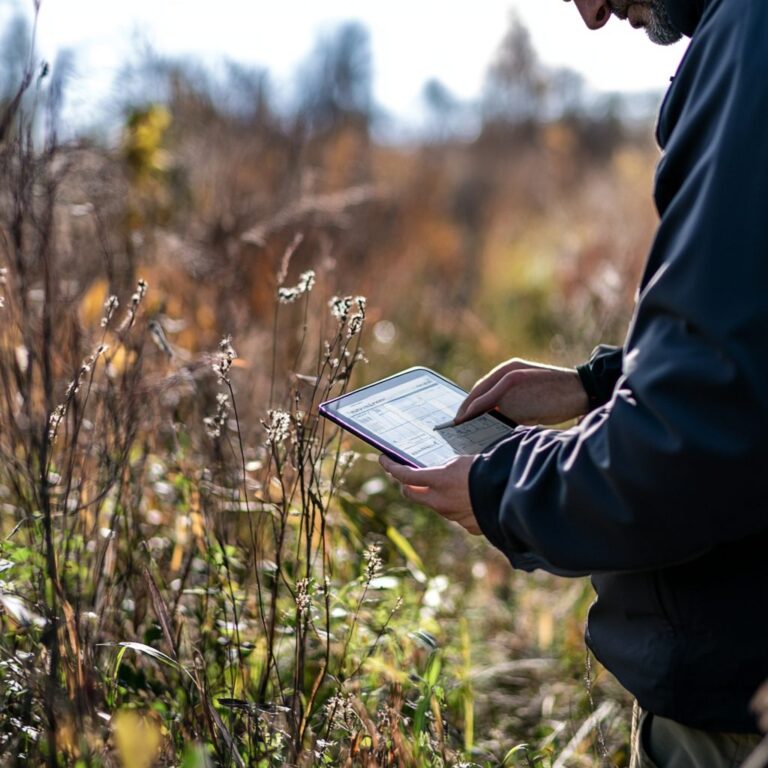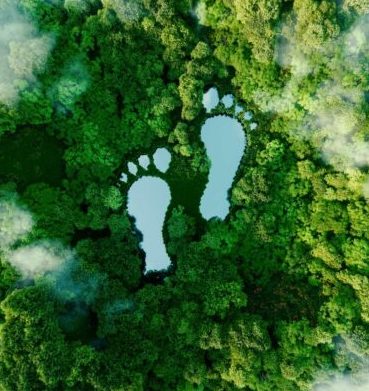Saturday, July 5, 2025
Environment Journal is inviting municipal managers from coast to coast to coast to tell us their stories, share their environmental plans, confide their waste management woes, shed light on emerging opportunities in their corner of the country, and provide inspiration on the path to net zero. Today we begin with the forward-thinking City of Vaughan and City Manager Nick Spensieri’s 10 ways to develop sustainable city-building.
Our mission is to champion a sustainable community, act as a steward to preserve the natural environment and lead with municipal best practices – as outlined in the 2018-2022 Term of Council Service Excellence Strategic Plan. Sustainable development is not just a trend, it is a significant priority.
Vaughan is a green city, and sustainability is at the heart of all city-building efforts. It is woven into planning standards, transportation management, operational performance and much more. Here are 10 ways the City of Vaughan is building sustainably:
- Environmental Stewardship
The City is a proven leader in environmental stewardship and encourages the community to do their part. Five examples of work in action are below:
- Green Directions Vaughan. Green Directions Vaughan 2019 is the City’s community sustainability plan. This long-term plan encompasses the guiding principles and actions that the City is dedicated to putting into action to meet key environmental stewardship goals, such as enhancing stormwater management, reducing greenhouse gas emissions through the provision of sustainable transportation, and changing how the organization designs, plans and executes programs.
- Green Guardians. Green Guardians is the City’s new environmental stewardship program – and residents and businesses are invited to join in. As a Green Guardian, people can get involved in City-led events or create their own community event that promotes environmental stewardship and helps keep Vaughan safe, clean and beautiful. Funding is available for those who want to host their own planting event.
- Earth Hour. Hosting events like the annual Vaughan Earth Hour celebration is one of the many ways the City continues to advocate for the environment and help citizens adopt sustainable behaviours in their own homes. In addition, every year at 8 p.m., City lights power down in recognition of the global movement.
- Sustainable Neighbourhood Action Program (SNAP). Vaughan’s Thornhill neighbourhood is host to the City’s first SNAP, an initiative created by the Toronto and Region Conservation Authority to create sustainable, livable communities. The program aligns municipal objectives with the best interests of Vaughan’s citizens to make an array of improvements like increasing greenspace, revitalizing pathways and parks, creating complete streets with pedestrian and cycling facilities and helping homeowners improve their own energy efficiency.
- Pollinator Projects. Vaughan is committed to protecting pollinators and their habitats and has planted pollinator-friendly gardens at Vaughan City Hall, Vellore Heritage Square, Oakbank Pond, Veteran’s Park and Doctors McLean District Park. In addition, pollinator-friendly plants are included in garden beds planted across the City in line with the City’s Beautification Strategy. The City is a proud supporter of the Mayor’s Monarch Pledge, and each June, the City recognizes Pollinator Week and takes the opportunity to educate residents on why it is important to protect birds, bees, butterflies, bats and beetles.
- Green Buildings
Vaughan is focused on fostering a resilient city – and one way the City is striving to achieve this is by retrofitting City-owned facilities. Currently, three City facilities are LEED (Leadership in Energy and Environmental Design) Gold certified: Vaughan City Hall, Fire Station 7-10 and Fire Station 7-9. The Civic Centre Resource Library has also achieved LEED silver certification. LEED is an international symbol of sustainability excellence and green building leadership. The certification recognizes buildings that help lower carbon emissions, conserve resources and reduce operating costs.
The future Carrville Community Centre, Library and District Park is also tracking to become a Zero Carbon and LEED Gold building, featuring geothermal, renewable and heat reclaiming systems to make the building self-sufficient and off-grid. Fire Station 7-12 is aiming to receive LEED Gold certification and Net Zero Energy building status, with features such as mass timber, renewable energy measures and heat reclaiming systems. In addition, Fire Station 7-1 is tracking to become a Net Zero Energy building or a Zero Carbon building thanks to a high-performance facility renewal.
- Sustainability Metrics Program
The City’s Sustainability Metrics Program evaluates the sustainability performance of new development in Vaughan. It is a critical tool used to facilitate and accelerate green development standards to help mitigate climate change. The program is a point-based system in which development proposals earn points for achieving specific criteria organized around the categories of: Built Environment, Mobility, Natural Environment and Open Space, Infrastructure and Buildings, and Innovation. As of 2023, all new development applications must achieve a minimum score to be approved. The metrics were developed in partnership with the cities of Richmond Hill, Brampton and Markham to ensure a consistent approach is applied within adjacent municipalities. Learn more by visiting the City’s website.
- Active and Low Carbon Transportation Infrastructure
In 2020, the City completed an update to the Pedestrian and Bicycle Master Plan. The Plan outlines a path forward that prioritizes sustainable modes of transportation through safer connected active transportation infrastructure as well as education and outreach. The recently completed Clark Avenue project included pedestrian and accessibility enhancements, 4.5 kilometres of in-boulevard cycle tracks (on each side of the street) and 32 transit stop upgrades. Furthermore, the City is advancing pedestrian improvements and in-boulevard cycle tracks along Jane Street, New Westminster Drive, Martin Grove Road, and Weston Road, to name a few.
The City is also prioritizing connectivity with the advancement of the Vaughan Super Trail (VST) initiative through trail projects that connect to existing facilities. Key trail accomplishments in 2021 included the completion of Riverwalk Phase 2A at Doctors MacLean District Park, design of the Bartley Smith Greenway underpass at Langstaff Park and the construction of a trail within Block 55 Hydro Corridor as well as completion of the Humber Trail feasibility study and the initiation of the Bartley Smith Greenway feasibility study which is now close to completion. In 2021, over 130 kilometres of cycling facilities, multi-use pathways and trails were advanced through municipal, regional and partner projects.
In an effort to contribute to a low-carbon economy, Vaughan has invested in electric vehicle charging infrastructure at City facilities. Currently, four level-2 charging stations capable of charging eight vehicles at once are located at Vaughan City Hall and electrical line rough-ins have been installed to support an additional 20 vehicles charging with level-2 stations and two vehicles charging with level-3 stations. The Civic Centre Resource Library has one level-2 charging station capable of charging two vehicles at once, and the Joint Operations Centre has two level-2 charging stations capable of charging four vehicles at once. Nine other City-owned locations have been identified as being suitable for charging stations, and the City is actively seeking external funding to purchase and install them. The City has been granted funding from The Atmospheric Fund’s EV Station Fund, supported by Natural Resources Canada, to install a level-2 charging station at the Pierre Berton Heritage Centre in Kleinburg, which will support two vehicles charging at the same time.
- Fire and Rescue Service Green Fleets
Vaughan Fire and Rescue Service (VFRS) is going green! As a committed partner in reducing greenhouse gas emissions, VFRS will introduce electric and hybrid vehicles to its fleet, including cars, pick-up trucks and SUVs. Nearly 25 “green” support vehicles will be purchased over the next eight years – three of them will be on the road by the end of this year. These vehicles play essential roles – fire inspectors drive them when inspecting a new business to make sure it is safe to open; deputy chiefs drive them when attending the scene of a fire; prevention officers drive them when visiting a classroom to educate students about fire safety; and the training division drives them to ensure annual maintenance training is completed for all firefighters. Through this change, VFRS expects to see a significant reduction in maintenance and fuel costs, with no impact to response times or services.

In addition, the City’s Public Works department purchased its first two electric fleet vehicles in 2019, downsizing from half-ton pick-up trucks to a Nissan Leafs. This change will lower operating costs by 93 per cent and result in a 97 per cent reduction in greenhouse gas emissions.
- LED Streetlights Retrofit Program
In October 2019, Vaughan began a city-wide Streetlight Retrofit Program to replace high-pressure sodium (HPS) with light-emitting diode (LED) technology. Operating Vaughan’s streetlight network represents approximately 20 per cent of the City’s overall energy consumption. LED lights use approximately 50 per cent less energy compared to the previous bulbs and have a longer lifespan – about four times longer. This translates into ongoing savings in operating and maintenance costs, and as a result of the reduction in energy consumption, the City will save approximately $1 million annually.
LED lights are also more reliable, help reduce greenhouse gas emissions and improve roadway safety for pedestrians and drivers, as they radiate a brighter white light. Smart technology upgrades are also part of the program, such as a web-enabled lighting control system for remote monitoring, operation and maintenance. This provides accurate energy metering per streetlight, integrated GPS for real-time streetlight performance reporting and the ability to turn on, dim or turn off streetlights remotely. In total, approximately 24,000 (and counting!) new lights have been installed.
- Renewal at Black Creek
The Black Creek Renewal Project was launched in 2019 to help prevent flooding in the downtown core – the Vaughan Metropolitan Centre. Through it, the City will be able to implement effective flood control measures, enhance the natural heritage system and beautify the area. Most recently, a study identified solutions to reduce flooding and flood damages, improve water quality and limit stream bank erosion in Black Creek – the preferred solution is to reconstruct and renew the Black Creek corridor between Edgeley Pond (north of Highway 7) and Highway 407. The City is currently working to propose potential alignments.
- Municipal Energy Plan and Other Energy-Related Initiatives
The City of Vaughan is conducting a comprehensive Municipal Energy Plan Revision. A Municipal Energy Plan is a strategic planning document and action framework that outlines how a community can increase energy efficiency, reduce greenhouse gas emissions and limit economic risks associated with transitioning to a low-carbon community. Once complete, the City’s revised Municipal Energy Plan will:
- set out a pathway to reduce per-capita greenhouse gas emissions by approximately half by 2030, and to reach the target of net zero greenhouse gas emissions by 2050, while respecting the needs of those who live, work and play in Vaughan.
- consider the role of the City in driving and supporting action.
- identify how citizens, businesses and stakeholders can participate in transitioning Vaughan to a low-carbon community.
- help inform the Official Plan Review that is currently underway.
In June 2022, City staff responded to a “Thinking Globally, Acting Locally” Member’s Resolution by proposing the following five actions the municipality can take to address global warming:
- Set a building performance minimum requirement for all new development applications to achieve “good” energy efficiency levels.
- Set a minimum requirement of five per cent on-site energy generation for all industrial, commercial, institutional and multi-unit residential building developments.
- Continue partnerships with Climate Wise Business Network to encourage energy benchmarking beyond provincial standards for buildings over 50,000 square feet.
- Update Vaughan’s Green Building Policy to adhere to Net Zero building specifications or LEED Gold building standards for new and retrofits of public buildings.
- Advance active transportation initiatives as outlined in the City’s Pedestrian and Bicycle Master Plan, 2020.
- Bird-Safe Design Standards
Vaughan endorsed Bird-Safe Design Standards in May 2022 to ensure all new private and City-owned developments meet certain sustainability requirements. Through these standards, the City will explore retrofitting existing City-owned buildings with bird-safe design treatments to make the glass safer and more visible for birds. Public outreach programs are also underway to encourage existing private buildings in the community to do the same. The City is currently seeking Bird-Friendly City Certification from Nature Canada.
- Municipal Natural Assets Initiative
In partnership with the Municipal Natural Assets Initiative (MNAI), the City is evaluating its green infrastructure assets. By preparing this inventory, Vaughan will increase the quality and resilience of its municipal infrastructure at lower costs and reduced risk. Natural municipal assets are increasingly being recognized for the provision of ecosystem services. In addition, they provide both climate mitigation and climate adaptation outcomes. Through the MNAI, the City will have access to industry best practices and third-party verification in identifying and valuing its natural assets.
The City continues to advance the important work of keeping Vaughan green – these 10 ways are just a few of many examples the City continues to champion. But there is still more to be done. The goal is to create a Vaughan that is more sustainable and resilient today and for future generations. Visit vaughan.ca/environment to learn more.
Nick Spensieri is city manager with the City of Vaughan in Ontario.












